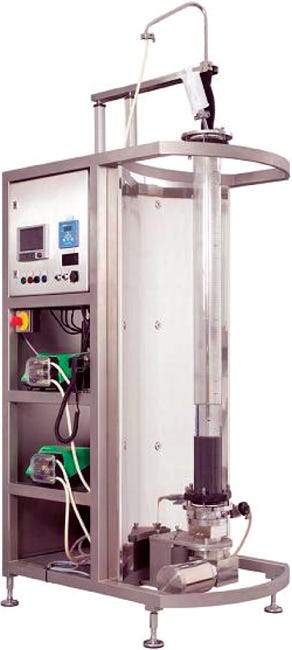Rhobust® TechnologyRhobust® Technology
August 1, 2011

Product recovery is a lengthy and costly procedure consisting of centrifugation and depth filtration steps to remove the cells (clarification), followed by multiple cycles of packed-bed chromatography that bind and separate the target molecule from cell culture medium components (capture).
The Rhobust® Technology is a second generation expanded-bed adsorption (EBA) technology that provides an elegant solution to using multiple process steps by combining clarification and product capture into one single step in the first downstream process unit operation. The Rhobust® Technology uses a new generation of Agarose beads that are prepared from a homogeneous mixture of Agarose and Tungsten Carbide (10 vol%) and consequently have a high density (3 g/mL). This allows processing to occur at higher flow rates in the expanded-bed mode when compared with those used for packed-bed chromatography (300–600 cm/h rather than 60–300 cm/h, Figure 1).

Figure 1: ()

Product recovery and purity are comparable to that of product produced using classical technologies (e.g., filtration and packed-bed capture).
In addition, due to the operation in the expanded-bed mode, crude harvest can be loaded directly onto the column. Cells flow through the expanded bed, and product is captured directly from the culture medium. Labor-intensive procedures such as column packing and qualification under high-pressure conditions are not required, shortening process time and reducing cleanroom occupancy. The process is scalable from 1-cm to 2-cm diameter laboratory columns up to 10-cm diameter intermediate-scale columns and finally to 60-cm diameter production-scale columns.

The photo above, left shows a Rhobust® Flex system used for the uncomplicated operation of an EBAprocess. Standard ligand chemistries such as Protein A, ion exchange, and mixed mode are available for the capture of monoclonal antibodies or other recombinant proteins. In addition, upon request, new functionalities can be developed for the capture of specific biopharmaceutical products.
About the Author
Author Details
Rolf Douwenga is vice president of global R&D for DSM Biologics, Zuiderweg 72/2, 9744 AP Groningen, The Netherlands; 31-50-5222-222; [email protected], www.dsmbiologics.com.
You May Also Like






